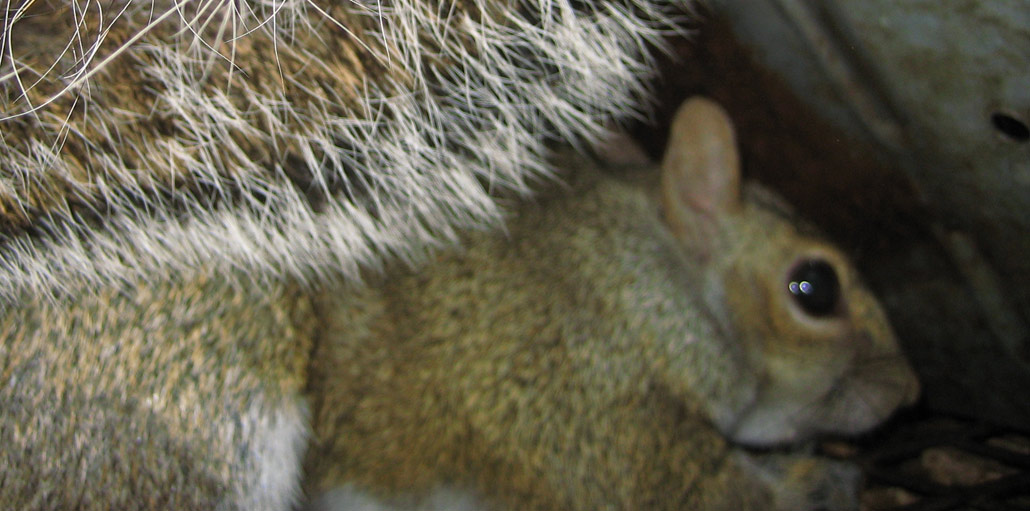- USA Wildlife Removal Education Guide - All About Squirrels
All About Squirrels

Squirrels are classified as rodents. They have four incisors that are constantly growing and need filing down, which indicators rodents. Squirrels chew to keep them the right size to fit in their mouths. This is why, when we see one on a tree limb, he or she is probably nibbling on something.
Appearance
Squirrels range from about 5 inches long in Africa to up to four feet long in Laos. In North America, they are small to medium in length.
Squirrels commonly “sit” on their hind legs while using their front paws and sharp claws to climb and hold food to eat. Their bushy tails are used to keep balance when climbing, scaring away predators, regulating temperature and cushioning falls.
Biology
Females (sows) produce about 2 litters of young per year with the major breeding seasons between December and January and between May and June. Litters consist of 2 to 4.
Males (boars) keep their testicles inside their bodies until it is breeding time. The dominant male usually gets the mate. The male and female then have a short courtship, before she enters her breeding cycle. After breeding, the males have no interaction with their young.
The typical pregnancy lasts between 40 and 45 days. The babies are born hairless, their eyes and ears closed, and only weigh ½ an ounce. The young squirrels are sexually mature at the end of their first year.
Life Cycle
The life cycle of a squirrel in the wild averages around 6 years depending on the amount of food available, predators, disease and weather. In captivity, some squirrels live up to 15 years.
Habitat
The best place for squirrels to live is in hollow “dens,” inside a tree. Female squirrels with babies will not allow other squirrels to share the den even though squirrels are social animals. If a den is not found, they will make leaf nests, but that severely impacts the survival rate of the baby squirrels.
Diet
Everyone knows that squirrels like nuts, but if there isn’t enough, squirrels will eat berries and other fruits, flowers, mushrooms and even the occasional small animal.
Behavior Squirrels do not hibernate and are active during the day. They are territorial and noisy, especially during mating season and tend to be social, except when rearing their young. Chasing is used for play, mating and guarding their territory.
If you need help, we service the entire USA! Click here for a wildlife removal specialist in your town!
Go back to the main Squirrel Removal page for more information about All About Squirrels.
Read more articles I wrote about squirrels to help you with your problem. I can show you some humane ways to kill a squirrel in a cage and how to Keep Squirrels out of your House. Learn how well squirrels can climb and jump and if the city or county animal services will help with a squirrel issue, or if your homeowners insurance will pay for the damage. Learn how to detect if you have a Squirrel In Your Attic and if it is safe to handle a squirrel with bare hands. I can show you how to keep squirrels out of your garden and how to use a one-way funnel to get squirrels out of a buildling. Learn about a squirrel's natural diet and what you should do if you find a nest of squirrels in the attic. I can let you know if you should baby squirrel you found and if a squirrel's feces are dangerous to touch or breathe. Learn the diseases squirrels carry, how to find and remove a dead squirrel in a house and how to clean clean squirrel feces out of my attic.

